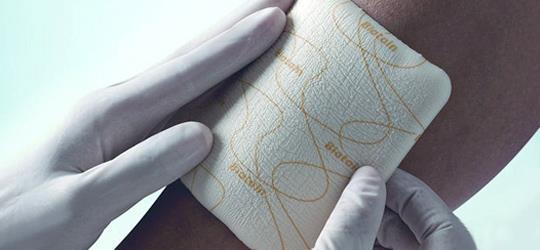
 Reviewed by Christine Kijek, Registered Colorectal Nurse on, July 8, 2022
Reviewed by Christine Kijek, Registered Colorectal Nurse on, July 8, 2022
Introduction | Wound Healing | Types of Wound | Prevent Wound Infection | Types of Wound Dressings
Caring for your wound is elementary if healing has to be quick. The Wound healing process depends on a number of factors and so can be complex. Important ones are age and general health of the individual. If the body is young then healing is faster. Age can slow down the repair process and certain illnesses, like diabetes, may negatively impact it, too. However, one element which plays a significant role in the healing process of wounds are wound dressing products. But which wound care dressing to select? The correct choice is key. This will depend upon what the wound type is because each wound dressing has unique attributes which play an important role during wound dressing selection.
For all this, it is important to make an assessment of the wound type, know the conditions that affect wound healing process and then learn how to manage it with the right wound care dressing type.
How will you know what wound type it is? How to assess a wound? Your doctor or caregiver will carry out the assessment but you should also be aware of the factors. For this you need to check out the following:

What is the healing process of a wound? Once the wound has been assessed and its status identified, we need to look at the broad factors that impact The wound healing process positively. Overall, the following points need to be looked into for a speedy recovery:
We generally consider a wound to be a lesion – whether minor or severe. But clinically, wounds are classified into different types. Of these five are basic. They are:

Management of wounds is important and monitoring it is the first step towards the process of healing. Evaluate the wound bed. If the area is red or pink, it means the wound environment is conducive to healing and it is on the path to recovery. If the wound is black or yellow it means there is dead or necrotic skin on and around the wound site and this could lead to infections thus delaying healing. The dead tissues and slough have to be removed.
Removal of dead tissues, also called debridement, can be done either surgically or through autolytic debridement. The latter involves application of a solution or dressing.
Wounds, especially severe ones, are not easy to deal with and require close attention. The biggest challenge to the process of wound healing is wound infection. Infection can set in without a warning and is difficult to get rid of. This is the reason medical experts stress the importance of wound care. Delayed healing can take a toll on your mental and physical health and emotional recovery becomes a source of worry.
How to prevent wound infection? Doctors advise always to be on the alert for signs of infection. These include:
A dressing deals with the wound in certain ways. Ideally, it should:
Remember, wound dressings do not directly heal wounds. They just create the environment for healing. They tackle the elements that can prevent and delay recovery. Therefore, using the correct wound care dressing will set up the right conditions. And this choice will depend on the wound characteristics.
An expert’s help is required in the selection and he will base this on the wound type and its healing status– whether infected, granulating or necrotic.
There are several types of wound dressing products and each with distinctive traits. You cannot pick the type suitable for you without advice from your doctor or caregiver. But it is important to know about the dressing that is right for you.
The most commonly-used types of wound dressings are:
Apart from the ones mentioned above, there are several other types of wound dressings available. The list includes topical wound dressings, iodine dressings, wound dressings for burns, hydrofiber dressings, hydrocellular wound dressings, gauze dressings, Una Boot dressings and absorbent wound dressings.
All the above have specific roles in the process of wound healing and are unique in their own ways. So before settling on a wound dressing type, ensure the one you buy is appropriate.
Disclaimer: All content found on our website, including images, videos, infographics and text were created solely for informational purposes. Our content should never be used for the purpose of diagnosis or treatment of any medical conditions. Content shared on our websites is not meant to be used as a substitute for advice from a certified medical professional. Reliance on the information provided on our website as a basis for patient treatment is solely at your own risk. We urge all our customers to always consult a physician or a certified medical professional before trying or using a new medical product.